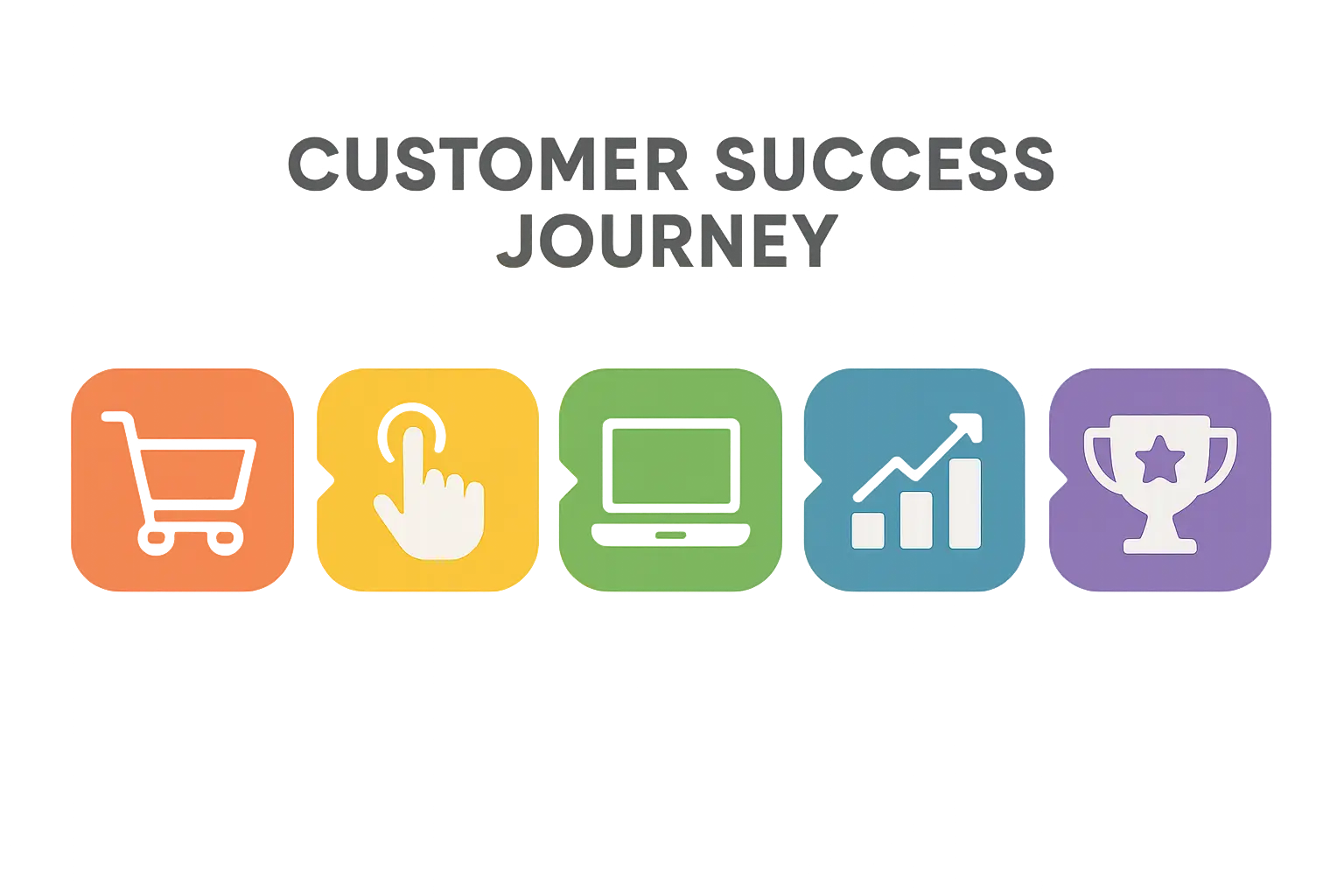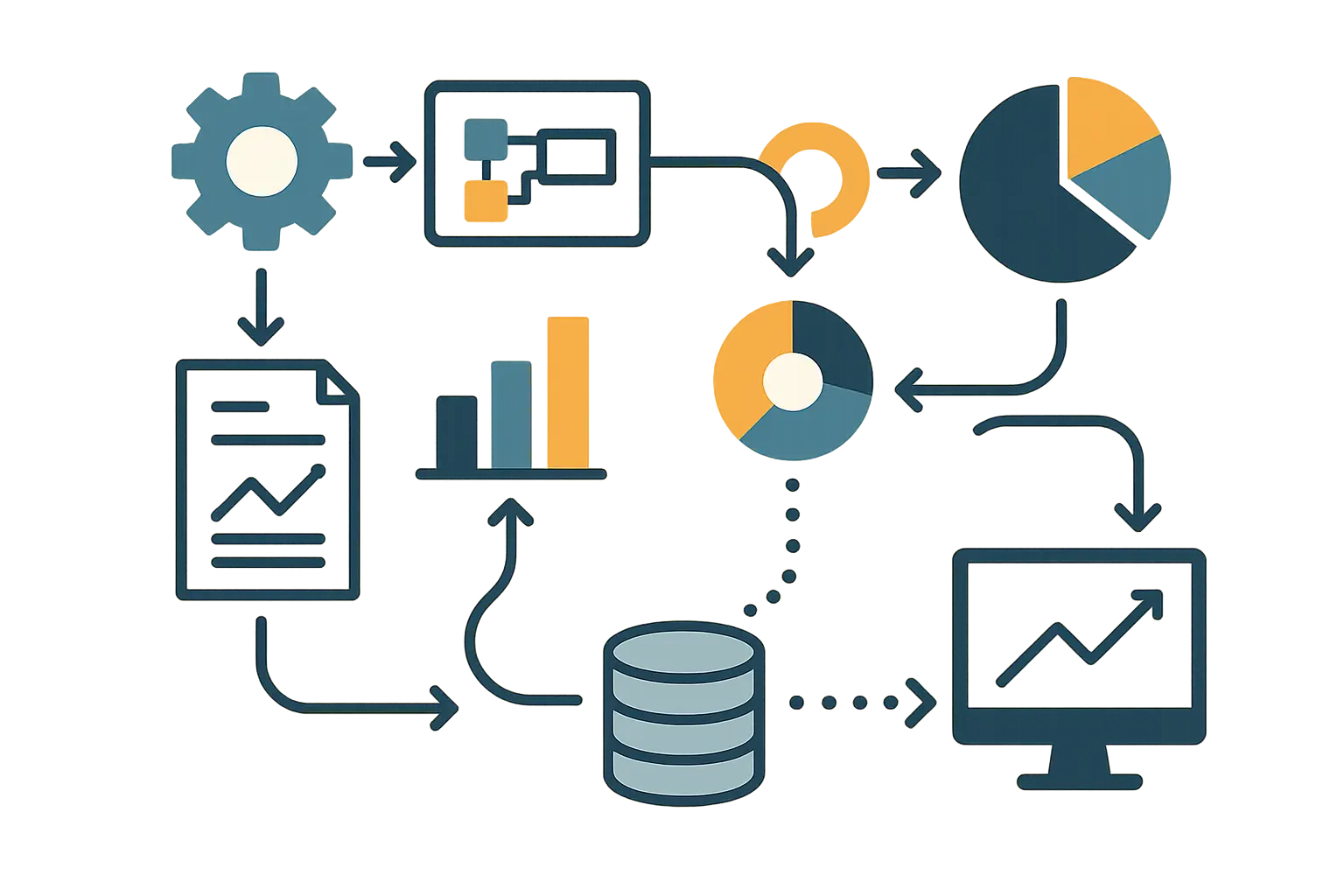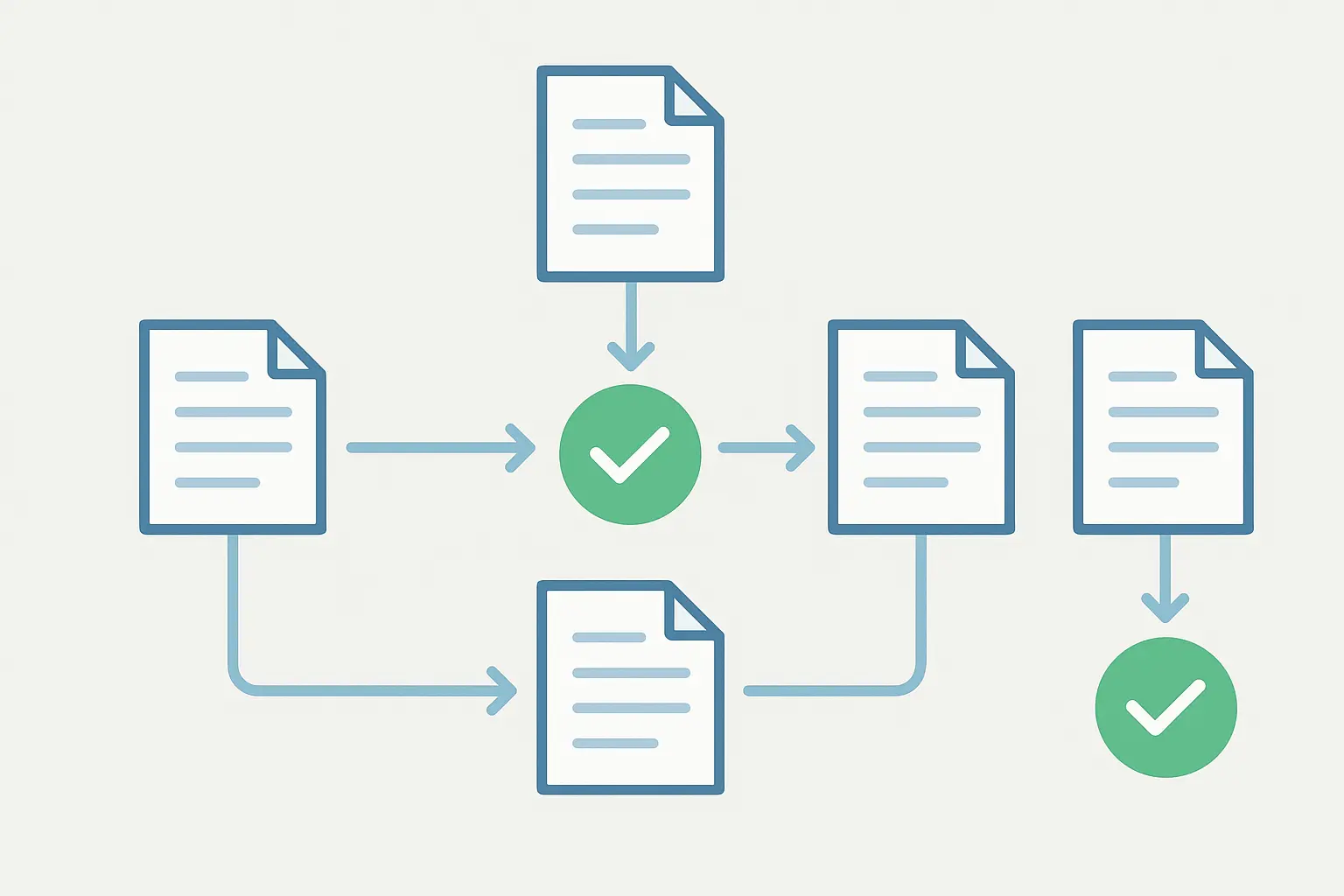Adobe made a huge shift from selling software once to getting people to pay monthly. And you know what made the difference? They got really, really good at telling their customers’ stories. In 2013, Adobe switched to a SaaS model, and within just 2.5 years, they had gained four million new subscribers according to Single Grain’s marketing analysis. This wasn’t just about changing their business model—it was about mastering the art of turning customer transformations into stories that actually drive business results.

Table of Contents
-
Understanding Adobe’s Customer Success Framework
-
Breaking Down the Strategic Documentation Process
-
Industry-Specific Success Story Patterns
-
Customer Segmentation and Profiling Strategies
-
The Case Study Development Methodology
-
Multi-Channel Content Amplification Tactics
-
Performance Measurement and Optimization
-
Transforming Your Own Customer Stories
TL;DR
-
Adobe uses a problem-solution-results framework that mixes technical details with real business outcomes
-
Hard numbers like productivity improvements and cost savings build trust, while human stories show what transformation actually feels like
-
Industry-specific case studies hit way harder with decision-makers facing similar challenges
-
Customer selection focuses on measurable success, willingness to participate, and strategic market fit
-
Multi-format content strategy turns one case study into a whole content ecosystem
-
Performance tracking includes engagement analytics, attribution modeling, and ROI calculations
-
Any business can adapt this methodology to showcase client wins and drive growth
Understanding Adobe’s Customer Success Framework
I’ve spent a lot of time digging into how Adobe approaches customer success documentation, and honestly, what strikes me most is how they’ve turned customer storytelling into a science. This isn’t just about creating pretty marketing materials – they’ve built this sophisticated system for documenting customer transformations that works as both marketing tools and educational resources, giving concrete examples of how their solutions solve real business problems.
Their case study ecosystem does double duty. You’ll find these stories everywhere – their website, sales presentations, partner materials. What makes them different is that every adobe case study follows this deliberate structure that actually helps potential customers picture their own success.

The Problem-Solution-Results Blueprint
Most companies just throw case studies together without much thought. Adobe doesn’t. They’ve nailed down this three-part structure that hooks you from the start.
First comes the problem – and they don’t sugarcoat it. You’ll read about companies drowning in outdated workflows, teams that can’t work together, or marketing departments buried in manual processes. These aren’t vague business challenges; they’re specific pain points that make you think, “That sounds exactly like what we’re dealing with.”
The solution section gets into the technical stuff without making your eyes glaze over. Adobe walks you through their implementation process, explaining which products they used and why. They’ll mention integration headaches, training requirements, and timeline hiccups. This honesty builds trust because they’re not pretending everything was smooth sailing.
Results come last, and this is where Adobe really shines. They don’t just say “things got better.” You’ll see actual percentages, dollar amounts, and time savings. A 40% reduction in project completion time. $2.3 million in cost savings. 60% faster time-to-market. These numbers stick with you.
Think about it – if your team usually takes two weeks to finish a project, now they’re done in eight days. Or imagine telling your boss you just saved the company over two million dollars. That’s the kind of stuff that gets people’s attention.
Understanding the power of measurable outcomes is crucial for any business looking to demonstrate value, much like how companies use marketing ROI calculators to quantify their campaign effectiveness and justify budget allocations.
|
Case Study Component |
Traditional Approach |
Adobe’s Strategic Method |
|---|---|---|
|
Problem Definition |
Generic business challenges |
Specific, relatable pain points |
|
Solution Description |
Product feature lists |
Implementation process with challenges |
|
Results Presentation |
Vague improvement claims |
Concrete metrics and percentages |
|
Timeline Coverage |
Post-implementation only |
Full journey including obstacles |
|
Stakeholder Voices |
Single contact person |
Multiple organizational perspectives |
Balancing Hard Data with Human Impact
Numbers tell part of the story, but Adobe knows that decision-makers are human. They weave in the emotional transformation that happens when teams start working differently.
You’ll read quotes from creative directors talking about how their teams finally feel free to experiment. Marketing managers describe the relief of having real-time campaign insights instead of waiting weeks for reports. IT leaders share how they sleep better knowing their systems actually talk to each other.
This emotional layer matters way more than you might think. When someone’s reading a case study at 10 PM, trying to figure out if a solution will work for their team, those human moments create connection. The spreadsheet shows ROI, but the story shows possibility.
I was reading this one case study where a creative director said something like, “For the first time in years, my team actually wants to try new things instead of just playing it safe.” That hit me because I’ve been in those meetings where everyone’s too scared to suggest anything different.
Adobe’s case study with ServiceNow shows this balance perfectly. While they highlight measurable outcomes like improved efficiency metrics, they also capture ServiceNow’s global CMO describing Adobe as their “ride or die partner in our transformation” and emphasizing the cultural shift from being “product led” to “brand led” organization. This emotional testimony resonates with other executives facing similar organizational transformations.
Breaking Down the Strategic Documentation Process
Adobe doesn’t randomly pick customers and hope for good stories. Their selection process is methodical, almost ruthless in its focus on strategic value.
They’re looking for customers who achieved measurable success – not just “we’re happy with the product” but actual, documented improvements. The customer has to be willing to participate, which means going on record with specific results and potentially doing interviews or video testimonials.
Strategic importance matters too. Adobe considers which markets they’re trying to break into, what competitive battles they’re fighting, and which product launches need support. Every case study has to earn its keep.

The Verification Process
Here’s something most companies completely skip (and honestly, it’s kind of shocking): Adobe actually checks if the results their customers claim are real. They don’t just take someone’s word that they saved $500K or improved efficiency by 30%.
The verification process involves data analysis, stakeholder interviews, and documentation of baseline measurements versus post-implementation outcomes. It’s thorough because Adobe knows that inflated or unverifiable claims will eventually backfire.
This attention to detail shows up in the final case studies. When you read specific metrics, you can trust they’re real. That credibility becomes a competitive advantage when prospects are comparing vendors.
Adobe’s tax department case study with Thomson Reuters shows this verification approach perfectly. After implementing ONESOURCE Determination, Adobe achieved measurable results including a reduction of ABAP coding / SAP customizations related to tax by 95% and reduced sales tax return completion time from two weeks to just 30 minutes.
Multi-Stakeholder Interview Strategy
Adobe doesn’t just talk to one person at a customer company. They interview end users, IT decision-makers, and executive sponsors to capture different perspectives on the implementation and its impact.
End users provide the day-to-day reality – what actually changed in their workflows, what challenges they faced during adoption, and how the solution affects their daily work. IT folks share the technical implementation story, integration challenges, and system performance insights.
Executives focus on business impact – ROI calculations, strategic advantages, and organizational transformation. This multi-angle approach creates richer, more complete stories that resonate with different types of readers.
Look, if you’re a small business owner trying to decide between Adobe and something cheaper, you don’t want to hear about how some Fortune 500 company transformed their global operations. You want to know if the local design shop down the street figured out how to stop pulling all-nighters.
Industry-Specific Success Story Patterns
Adobe figured out early that generic case studies don’t work. A manufacturing company doesn’t care how a media agency improved their creative workflows. They want to see how other manufacturers solved similar problems.
This industry-specific approach shows up in everything from the language used to the metrics highlighted. Creative industry case studies focus on workflow optimization and collaborative design processes. Enterprise marketing stories emphasize automation and customer journey optimization.
The result? Higher engagement rates and more qualified leads because prospects see themselves in the stories.

Creative Industry Transformations
When Adobe targets advertising agencies, media companies, and entertainment studios, their case studies focus on creative workflow optimization and content production scalability.
These stories highlight how Creative Cloud enables distributed teams to maintain brand consistency while accelerating creative output. You’ll read about agencies that cut project timelines in half or studios that can now handle twice as many clients without adding staff.
The language shifts too. Instead of talking about “productivity improvements,” they discuss “creative freedom” and “artistic collaboration.” The metrics matter, but the framing speaks to creative professionals’ values and priorities. These adobe customers represent some of the most innovative companies in their respective industries.
Adobe’s commitment to supporting creative communities extends beyond traditional marketing, as demonstrated in recent museum collaborations. The Oakland Museum of California’s “Calli: The Art of Xicanx Peoples” exhibition showcased how institutions can ethically work with Indigenous materials and contemporary artists, reflecting Adobe’s broader commitment to supporting diverse creative voices and culturally sensitive practices.
Enterprise Marketing Evolutions
B2B and enterprise-focused case studies take a completely different approach. Here, Adobe emphasizes marketing automation, customer journey optimization, and data-driven decision making through Experience Cloud.
These narratives demonstrate ROI through improved conversion rates, enhanced customer experiences, and marketing efficiency gains. You’ll see detailed attribution models, customer lifetime value improvements, and cost-per-acquisition reductions.
The tone becomes more analytical, the metrics more complex. These readers want to see sophisticated measurement frameworks and integration capabilities that can handle enterprise-scale challenges.
The emphasis on data-driven decision making mirrors the importance of advanced analytics for strategic growth, where businesses leverage comprehensive data insights to drive meaningful organizational transformation and competitive advantage.
Nine’s success with Adobe Experience Platform demonstrates this enterprise approach, with director Angelo Sinibaldi reporting that the platform enabled Nine to grow data revenues by 265 per cent over 4 years while providing real-time user segmentation capabilities.
Customer Segmentation and Profiling Strategies
Look, Adobe’s got everyone from freelance designers working out of coffee shops to massive Fortune 500 companies. You can’t just tell the same story to both and expect it to work – that’s like trying to sell a motorcycle the same way you’d sell a minivan.
What really struck me when I dug into their approach is how they actually think about this stuff. Small businesses are worried about whether they can afford it and if it’ll break their current setup. Big enterprises? They’re thinking about whether it’ll work with their 47 different systems and if they can train 10,000 employees without everything falling apart.
This isn’t just marketing theory – it shows up everywhere. The case studies they put in front of small businesses live in completely different places online and use totally different language than the ones they show enterprise buyers.

SMB Success Narratives
Small business case studies tackle the big question everyone’s thinking but nobody wants to ask: “Can a company like mine actually use this fancy enterprise software without going broke or losing our minds?”
These stories are all about getting up and running fast and seeing results immediately. You’ll read about small agencies that had everything working by Monday morning, or growing companies that didn’t have to hire three more people because they got so much more efficient.
The money talk is front and center too. Adobe shows the real math – like how much you’re spending now on five different tools versus just using theirs. Usually, the numbers make consolidating look pretty smart.
I saw one story about a 50-person marketing agency that was juggling five different creative tools. After switching to Creative Cloud, they cut their monthly software bills by 40% and started delivering projects 60% faster. The best part? They did the whole switch over a weekend. That’s the kind of story that makes small business owners think, “Maybe we can actually do this.”
Enterprise Implementation Chronicles
Big company case studies are a whole different animal. These organizations have requirements that would make your head spin, departments that don’t talk to each other, and legacy systems from the Stone Age that somehow still run critical business functions.
Adobe has to prove they can handle the chaos. You’ll read about global rollouts across thousands of users, integrating with systems that were built before the internet existed, and setting up governance frameworks that would make the UN jealous.
The change management stuff becomes huge here. These case studies basically become instruction manuals for other big companies, showing them how to get thousands of people to change how they work without causing a revolt.
Take Marriott’s story – their VP said Adobe Experience Platform helped them go from 45 different processes down to just one. They got 93% faster at updating content and beat their revenue goal by six times. When you’re talking about a company that size, those kinds of improvements are absolutely massive.
Marriott International’s implementation exemplifies enterprise-scale success, with VP Hilary Cook reporting that Adobe Experience Platform helped them achieve remarkable efficiency gains: We took 45 processes down to one… We were 93 per cent faster when updating content or offers… We were six times ahead of our revenue goal.
The Case Study Development Methodology
Adobe doesn’t just throw case studies together and hope for the best. Their process is almost obsessively thorough, and honestly, it shows.
They start by finding customers who’ve actually succeeded – not just “we’re happy” but “here are the specific ways our business got better.” Then the customer has to be willing to go public with it, which means interviews, maybe videos, and putting their name on results that their competitors will definitely see.
But here’s what really matters: Adobe picks customers strategically. They’re thinking about which markets they’re trying to break into, what battles they’re fighting with competitors, and which product launches need some real-world proof. Every single case study has to earn its keep.
The timeline thing is smart too. They usually wait 6-12 months after implementation before starting the case study process. That gives customers time to see real results and work through the inevitable hiccups that happen with any big software rollout.

Case Study Development Checklist:
-
Identify customers with measurable success metrics (6+ months post-implementation)
-
Confirm customer willingness to participate publicly
-
Assess strategic market alignment and competitive value
-
Schedule interviews with multiple stakeholders (end users, IT, executives)
-
Gather supporting documentation and baseline measurements
-
Conduct technical validation of all claimed results
-
Draft narrative following problem-solution-results framework
-
Review content with customer marketing and legal teams
-
Obtain final approvals from both organizations
-
Plan multi-channel distribution strategy
Content Development Process
The actual writing involves way more people than you’d expect. Adobe’s content team does structured interviews, gathers all the supporting docs, and works with the customer’s marketing team to make sure everyone’s brand guidelines are followed.
Here’s the part that impressed me most: Adobe actually validates all the technical stuff. Their product experts go through every claim and implementation detail to make sure it’s accurate. Both companies’ legal teams review everything before it goes live.
What you end up with is something both companies can actually be proud of. Adobe gets a legit success story they can trust, and the customer gets professional documentation of their transformation that they can use for their own marketing. It’s a win-win that actually works.
Recent developments in Adobe’s customer engagement strategy reflect their commitment to personalization at scale. At Adobe Summit, Adobe’s use of agentic AI is defining customer journey orchestration and is transforming the way both business to consumer (B2C) and business-to-business (B2B) brands interact with each of their customers with a personalised approach according to B&T’s coverage of the event.
Multi-Channel Content Amplification Tactics
Adobe doesn’t just publish case studies and cross their fingers hoping people will stumble across them. They’ve built this whole system that turns one customer story into like ten different pieces of content.
Video testimonials, interactive web experiences, podcast interviews, webinar presentations – they all come from the same core case study. It’s actually pretty brilliant because it maximizes what they get out of each customer relationship while giving people different ways to consume the content.
They also think about where people are in their buying journey. Someone just learning about Adobe might see a high-level transformation story, while someone comparing vendors gets the deep technical implementation details.

Digital Asset Optimization
Adobe turns case studies into all kinds of formats. Video testimonials with customer interviews and cool result visualizations work great for social media and sales presentations.
The interactive digital experiences are pretty slick – you can click through customer journeys and explore embedded product demos. It’s like Adobe showing off their own tools while telling someone else’s success story.
Podcast and webinar content gives them space for deeper conversations about implementation challenges and lessons learned. These longer discussions position Adobe executives as thought leaders while giving customers more platforms to share their wins.
Just as Adobe optimizes content across multiple formats, businesses can benefit from understanding high-impact blog topics that resonate with their target audiences and drive meaningful engagement across different content channels.
|
Content Format |
Primary Channel |
Audience Stage |
Key Benefits |
|---|---|---|---|
|
Video Testimonials |
Social Media, Sales Presentations |
Awareness |
High engagement, emotional connection |
|
Interactive Experiences |
Website, Trade Shows |
Consideration |
Product demonstration, hands-on exploration |
|
Podcast Interviews |
Audio Platforms |
Consideration/Decision |
Thought leadership, detailed insights |
|
Infographics |
Social Media, Email |
Awareness |
Quick consumption, shareable |
|
Webinar Presentations |
Virtual Events |
Decision |
Live interaction, Q&A opportunities |
|
White Papers |
Gated Content |
Decision |
Technical depth, lead generation |
Sales Enablement Integration
Here’s where it gets really strategic. Case studies become critical sales tools, giving Adobe’s sales teams proof points and conversation starters, especially in those complex enterprise deals where everyone’s skeptical.
The sales enablement approach includes training materials that help sales reps figure out which case studies will resonate with specific prospect types. They’ve got competitive differentiation materials that show how Adobe’s outcomes stack up against alternatives.
The CRM integration is smart – it automatically suggests relevant case studies based on what they know about the prospect, what stage the deal is in, and who they’re competing against. This systematic approach means case studies actually get used instead of just sitting in some folder somewhere.

Performance Measurement and Optimization
Adobe measures case study performance with the same intensity they bring to everything else. They track comprehensive metrics around who’s reading them, how engaged people are, and whether they convert to actual sales inquiries.
Engagement analytics include how long people spend reading, download rates, how often stories get shared, and whether people check out related content. This helps them understand which stories hit home with different audience segments.
The attribution modeling connects case study consumption to pipeline generation and closed deals. This data-driven approach lets them make smarter decisions about where to invest in content and which case studies to prioritize developing next.
Adobe’s performance measurement might reveal that enterprise case studies featuring specific ROI metrics generate 40% more qualified leads than those focusing solely on operational improvements. This insight would then influence their content development priorities, leading to more emphasis on financial outcomes in future enterprise-focused case studies.
ROI Measurement for Content Investment
Adobe actually calculates return on investment for case study development by weighing production costs against generated pipeline value, brand awareness lift, and customer retention benefits.
The ROI calculation includes both direct attribution (leads generated from people reading case studies) and indirect benefits like brand credibility, faster sales cycles, and competitive differentiation. This comprehensive approach justifies continued investment in customer storytelling.
They also track how featured customers become ongoing brand ambassadors through speaking engagements, reference calls, and social media promotion. These extended benefits often end up being worth more than the initial case study ROI.
Understanding the full scope of marketing investment returns requires sophisticated measurement approaches, similar to how businesses use ROAS calculators to evaluate campaign performance and optimize their advertising spend across different channels.

A/B Testing for Content Optimization
Adobe regularly tests different case study formats, headlines, and distribution approaches to optimize engagement and conversion rates. They’ll test video thumbnails against static images, long-form stories against bullet-point summaries, and industry-specific headlines against generic ones.
The testing extends to distribution timing, email subject lines, and social media copy. Adobe applies the same data-driven methodology they advocate for their customers to their own content marketing efforts.
Results from these tests inform future case study development. If interactive formats consistently outperform static PDFs, Adobe shifts resources toward more engaging content types. This continuous optimization ensures their case studies stay effective as audience preferences evolve.
Transforming Your Own Customer Stories
Here’s the thing – Adobe’s methodology isn’t some secret sauce that only works for software giants. Any business can adapt these principles to showcase client transformations and drive growth. You just need to approach customer storytelling with the same strategic thinking that Adobe applies.
Start with customer selection criteria that prioritize measurable success and strategic market alignment. Don’t just pick your happiest customers – choose the ones whose stories will actually resonate with your target prospects and show clear business value.
Develop a structured interview process that captures multiple perspectives and verifies claimed results. The credibility you build through thorough documentation will pay off big time when prospects are comparing you to competitors. Learning from adobe customer success stories can provide valuable insights into effective storytelling frameworks.

Customer Story Implementation Template:
-
Customer Selection Phase
-
Find customers with 6+ months of measurable results
-
Make sure they’re willing to participate publicly
-
Check if their story aligns with your market strategy
-
Consider how it differentiates you from competitors
-
-
Data Collection Phase
-
Interview multiple people at the customer company
-
Gather baseline and post-implementation metrics
-
Document technical implementation details
-
Collect supporting materials and evidence
-
-
Content Development Phase
-
Follow the problem-solution-results structure
-
Balance hard numbers with human impact stories
-
Include implementation challenges and how you solved them
-
Double-check all claims through multiple sources
-
-
Review and Approval Phase
-
Get technical validation from your product experts
-
Legal review from both organizations
-
Make sure brand guidelines are followed
-
Get final sign-offs from all stakeholders
-
-
Distribution and Amplification Phase
-
Adapt content for multiple channels
-
Integrate with your sales process
-
Set up performance tracking
-
Plan for ongoing optimization
-
The Marketing Agency understands the power of data-driven storytelling, much like how we help clients leverage SEO ROI calculators to demonstrate the tangible value of their digital marketing investments and build compelling business cases for continued optimization efforts.
The Marketing Agency understands the power of data-driven storytelling. We help businesses document and amplify their customer success stories using proven frameworks that drive measurable results. Our performance marketing approach ensures your case studies don’t just look good – they generate qualified leads and accelerate sales cycles.
Ready to transform your customer stories into marketing gold? We can discuss how our strategic content development process can showcase your client transformations and drive business growth.
Final Thoughts
Adobe’s case study methodology is more than just good marketing – it’s a systematic way to build credibility and show value through customer storytelling. Their framework proves that when you combine smart customer selection, rigorous documentation, and multi-channel amplification, case studies become seriously powerful business development tools.
The key insight isn’t that Adobe has better customers or more resources. It’s that they treat customer storytelling as a strategic discipline that deserves significant investment and careful measurement. They get that in a world where prospects are skeptical of vendor claims, authentic customer voices carry way more weight than any sales pitch ever could.



